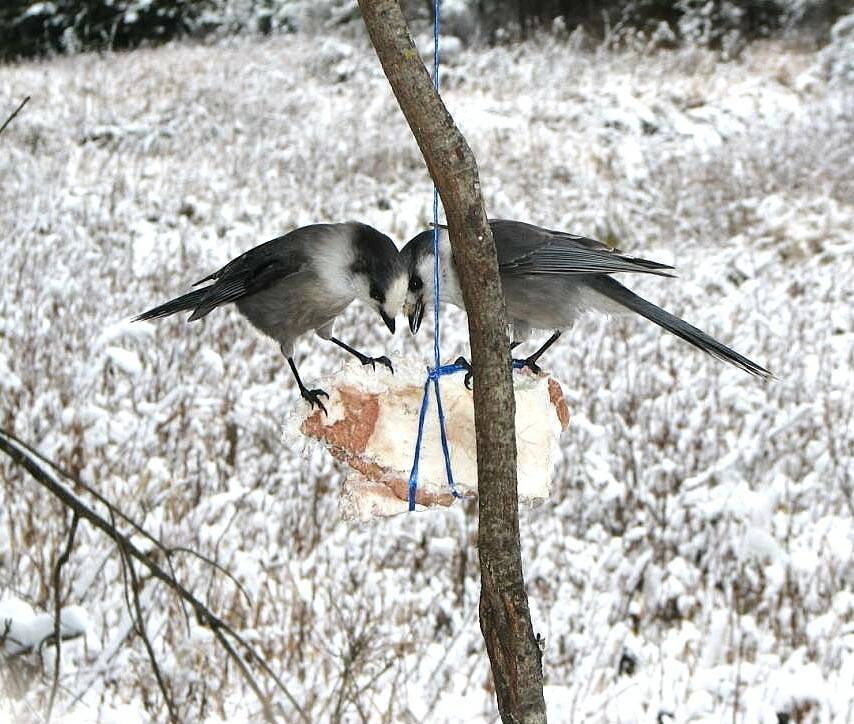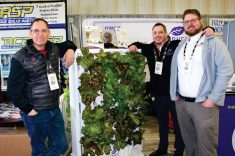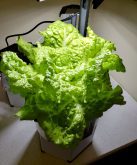Farmer Kristof Grina takes elevators to get to his fields.
The field in question, with a street address of 55 M Street, is on the 10th storey of an office building overlooking the U.S. capital. It is one of Up Top Acres’ 18 rooftop plots, totalling almost three acres.
Members of the ag sector have long bemoaned the disconnect between urban residents and the farm — an issue that, closer to home, has sparked initiatives like Open Farm Day or Ag in the Classroom.
Read Also

Hunting with whiskey jacks
Canada jays, or whiskey jacks, are bold little deer hunting pals that don’t mind getting close, if it means a piece of the offal or deer fat left over from a successful forest hunt in Manitoba.
“We grow everything from small leafy greens all the way up to (dwarf) tomatoes, cucumbers, peppers, watermelon, squash — really any type of specialty vegetable,” Grina, one of the three founders of Up Top Acres, told journalists attending the North American Agricultural Journalists’ (NAAJ) annual awards reception April 25. “We do all kinds of culinary herbs, all kinds of cut flowers.”
The for-profit enterprise was founded in 2014 and patterned after Brooklyn Grange, a New York City-based rooftop farming enterprise, which, according to its website, is the world’s largest at 5.6 acres.
Up Top Acres, which now produces about 80,000 pounds of produce a year, started off selling through a community-supported agriculture model and through farmers’ markets and restaurants.
“We figured out that’s not a really good way to make a living,” said Grina, who has a bachelor’s degree in plant and soil science from the University of Vermont. “Those challenges are just a logistical nightmare and, as a result, all of our labour costs go up.
“So what we’ve been able to do is we’ve convinced the buildings that we are partnered with to throw in some money to cover our operating costs and we’re able to distribute our produce at a low cost to organizations that are working in D.C. around food access… so that’s where most of our produce goes now.”
Because of city regulations to reduce storm sewer pollution to Chesapeake Bay, new buildings, or those under major renovation, are installing ‘green roofs.’ Up Top Acres’ sale pitch to building owners is to let the urban farm maintain and enhance their roofs. The owners get good publicity; tenants have access to some produce during the growing season and their green roofs will last longer.
“Green roofs will double, if not triple, the standard lifespan of a (roof) membrane,” Grina said. “(Farming) protects it from all the elements — sun, wind, dust.”
A roof membrane, meant to prevent leaking, could last up to 50 years instead of 15 or 20, according to the argument.
Champions of the practice also tie farmed rooftops to reduction of city heat in summer and habitat for pollinators.
It also creates awareness, and the company hosts rooftop agriculture demonstrations.

As a photo of one of the company’s signs states: “Up Top Acres grows food on roofs. We turn neglected spaces into productive farmland in order to establish agriculture as a fixture of city life. Join us.”
But slowing down heavy rains so storm sewers aren’t overwhelmed, pointing back to those city regulations, is another big benefit, Grina said.
Down to the ‘dirt’
The growing ‘medium,’ or what anyone else might call soil, used for rooftop planting is a proprietary formulation sold by green roof companies that checks all the right boxes, Grina said.
“It’s light weight so as (to) not worry about structural issues, sufficient enough in organic matter so that we can grow in it and… quick draining enough so that when we get big rainstorms, we don’t deal with any kind of ponding or flooding,” he said. “It’s designed to hold water well up until the point of saturation and then, once it gets to that point, shed that water. We’ve had no ponding up here no matter all the crazy rainstorms we’ve had… ”
The ‘soil’ is tested annually and, if needed, granular chicken manure is applied to bolster nutrients to feed the crops. Compost is added semi-annually.
Only hand tools such as hoes are used and the soil is not turned over — the rooftop version of no till.
Crops are grown organically, but not certified organic. Grina said there’s not much point since, most produce is given away, so no organic premium is captured.
Weeds are hand-pulled. Soil is protected during winter by cover crops such as vetch and clover. In some cases, soil is purposefully trapped.
“We learned our lesson the hard way,” Grina said, alluding to past winter winds whipping the soil away. “The wind definitely affects what we plant. We select plants that are lower growing. The only tomatoes that we grow are dwarf varieties.”
The practice of farming roofs is also an exercise in dealing with the microclimates created by that setting. A growing area on the south side of a penthouse, for example, is sheltered from the wind and gets full exposure to sunshine.
There is also the issue of growing season.
“We basically don’t have shoulder seasons,” Grina said. “We have an endless summer. Summer starts now (April 25) and grows until frost, basically (mid-November). Once we get the sun angle up here, there’s nothing blocking it from sunrise to sunset and we don’t have the Earth as a cooling mass.
“At the other end, we don’t have the Earth as a warming mass. Once we are getting freezing temperatures, it gets cold and it stays cold quickly up here. So because of that, we mostly grow one-season crops.”
The elevation also provides great ventilation.
“Our airflow is incredible, so we plant one crop of basil in the spring and we harvest it until November and we don’t have any mildew, we don’t have any blight,” Grina said.
There are, likewise, fewer — although not no — bugs.
“I would say we replaced the four-legged pests with more birds,” Grina said. “The crows really have a field day up here.”
However, birds aren’t so bad as to require netting to protect crops.
In total, Up Top Acres grows about 25 different small fruits and vegetables, 10 different herbs, plus flowers such as marigolds, strawflowers, statice, homunculus, roses and lavender.
Both flowers and produce are often used at events held at the same site as the NAAJ reception, including weddings.

The hurdles
Eight people, including three co-owners, are employed by the company, making labour its No. 1 expense, followed by insurance.
But one of Grina’s biggest complaints is that, even though Washington, D.C. is headquarters for the U.S. Department of Agriculture (USDA), there’s no local county office here.
That has led to issues applying for the same financial offerings available to rural farmers, and that Up Top Acres would also like to benefit from, according to him.
“We can’t even get a farm number here. It’s impossible. We’ve tried for years,” he said.
Instead of the subsidies open to other U.S. farmers, “we need to go find our own subsidies,” Grina said. “It wasn’t from the government, it was from the partner-property owners we’re operating from.”
Given those issues and the company’s experience so far, the question therefore becomes: Can future rooftop farming be profitable on its own?
“Maybe,” Grina said. “I think there is a possibility if you’re able to distribute produce (grown) on some of these larger roofs that we operate on within the building.”
At the same time, he added, “I don’t know that any agriculture in this country is really on its own. So my answer is, probably no, just like it is everywhere else.”
















